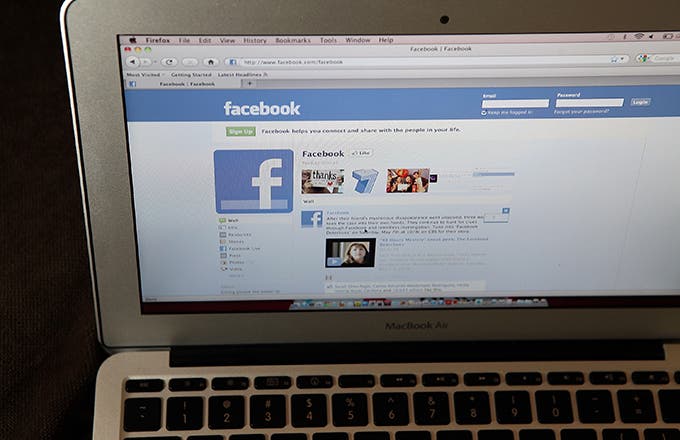 Facebook Incorporated (NASDAQ: FB) has defined itself as one of the leading social media companies of the world. As of July 24, 2015, it has a market capitalization of $271.74 billion and is the 12th largest company in the world by market capitalization. Facebook Incorporated has a market capitalization that is nearly 10 times larger than that of its competitors, Twitter Incorporated and LinkedIn Corporation. Its market capitalization is 11.42 times larger than Twitter's market capitalization of $23.79 billion and 9.59 times larger than LinkedIn's market capitalization of $28.35 billion. If you would have invested $1,000 into Facebook right after its initial public offering, you would have 26 shares of its common stock. If you would have invested an additional $992.88 when Facebook was trading at $17.73 per share, you would currently have 82 shares of its common stock.
Facebook Incorporated (NASDAQ: FB) has defined itself as one of the leading social media companies of the world. As of July 24, 2015, it has a market capitalization of $271.74 billion and is the 12th largest company in the world by market capitalization. Facebook Incorporated has a market capitalization that is nearly 10 times larger than that of its competitors, Twitter Incorporated and LinkedIn Corporation. Its market capitalization is 11.42 times larger than Twitter's market capitalization of $23.79 billion and 9.59 times larger than LinkedIn's market capitalization of $28.35 billion. If you would have invested $1,000 into Facebook right after its initial public offering, you would have 26 shares of its common stock. If you would have invested an additional $992.88 when Facebook was trading at $17.73 per share, you would currently have 82 shares of its common stock.If You Would Have Invested in Facebook After Its IPO
Facebook made its long-awaited filing for an initial public offering with the Securities and Exchange Commission, or SEC, on Feb. 1, 2012. Prior to its initial public offering, Facebook Incorporated stated it had net income of $1 billion in 2011, which was an increase of 65% from 2010. The company also stated it had 845 million monthly active users and 483 million daily active users as of Dec. 31, 2011.
On May 18, 2012, Facebook held its initial public offering and, at that time, it was the largest technology IPO in U.S. history. Facebook offered 421,233,615 shares at a price of $38 per share and raised $16.007 billion through that offering.
Assuming you would have been able to purchase shares at $38, despite the offering being pervaded with trading issues, you would currently have 26 shares, or $1,000 divided by $38. As of July 24, 2015, shares of Facebook Incorporated closed at $96.95. In three years’ time, you would have a return on investment of 155.13%, or ($96.95 * 26 shares - $38 * 26 shares) / ($38 * 26 shares). As of July 24, 2015, that investment would be worth $2,520.70, or $96.95 * 26 shares.
Assume that instead of selling Facebook near its all-time low, like some investors did, you placed a good 'til canceled limit order on FB for 56 shares at $17.73 per share before Sept. 4, 2012. On Sept. 4, 2012, Facebook closed at $17.73 per share, and therefore, you would have been filled on those 56 shares. Instead of owning a mere 26 shares, the extra $992.88 investment would have allowed you to purchase 56 more shares before fees and expenses. You would have 82 shares of Facebook and brought down your average price of $38 per share to only $24.16 per share, or ($38 * 26 shares) + ($17.73 * 56 shares) / (26 shares + 56 shares).However, Facebook did not staircase higher. Rather, the stock fell over $20 from the IPO price to $17.55 per share on Sept. 4, 2012. At this low, your return on investment would have been -53.82%, or ($17.55 * 26 shares) - ($38 * 26 shares) / ($38 * 26 shares). Some analysts and traders believe the company was overvalued and the IPO was priced too high, which led to the crash.
After 2012, Facebook traded sideways and never traded above its IPO price until July 31, 2013. This was due to Facebook's surprise beat on its earnings per share, or EPS, for the quarter ending May 2013. Facebook reported quarterly earnings per share of $0.13, while analysts were expecting an EPS of $0.09. Facebook has traded in an uptrend since July 31, 2013, and hit an all-time high of $99.24 on July 21, 2015.
Although Facebook experienced ups and downs after its IPO, if you stuck through the roller coaster ride and reinvested, you would have a return on investment of 301.33%, or ($96.95 * 82 shares) - ($24.16 * 82 shares) / ($24.16 * 82 shares). Your investment of $1,980.88 would have been worth $7,949.90 on July 24, 2015.
By Investopedia | Updated August 19, 2015
No comments:
Post a Comment